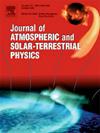利用地理空间技术对印度沿海地区热带气旋减灾空间风险进行评估
IF 1.9
4区 地球科学
Q3 GEOCHEMISTRY & GEOPHYSICS
Journal of Atmospheric and Solar-Terrestrial Physics
Pub Date : 2025-07-30
DOI:10.1016/j.jastp.2025.106602
引用次数: 0
摘要
孟加拉湾频繁的气旋造成了巨大的财产和生命损失。这就要求进行系统的脆弱性评估,以减轻其不利影响。奥里萨邦是印度最容易受到热带气旋影响的邦之一。大多数与奥里萨邦热带气旋风险测绘和疏散路线确定有关的研究仅限于大于地区一级的规模。利用模糊层次分析法(FAHP)和基于地理信息系统(GIS)的空间分析方法,对印度奥里萨邦Balasore地区热带气旋Yaas的风险进行了块级调查。为此目的,共使用了15个参数,分类为物理(6)、社会(6)和缓解(3)。采用层次分析法确定各参数的权重。然而,使用加权叠加分析(WOA)将权重分为高、中、低。通过物理和社会脆弱性指数乘数除以减灾能力乘数,生成空间脆弱性风险图。分析结果显示,研究区域的44.6%和49.3%分别属于“高”和“中等”风险类别,而约6%属于“低”风险类别。高危区主要分布在研究区的西部、西南部、中部和东部地区。这些国家不仅靠近气旋路径和海岸线,而且显示出较差的减灾能力。此外,基于已开发的风险图,使用网络分析确定从出口/定居点到气旋避难所的疏散路线(最短路径)。这些空间数据(例如,脆弱性风险图和疏散路线)可由地区应急行政和管理当局用于在巴拉索尔地区制定有效的飓风缓解计划。因此,该研究通过将FAHP和地理空间技术整合到地区一级的热带气旋空间风险评估中,证明了方法的稳健性。本文章由计算机程序翻译,如有差异,请以英文原文为准。
Spatial risk assessment of tropical cyclone for disaster mitigation in a coastal district of India using geospatial technology
Frequent cyclones in the Bay of Bengal (BoB) cause substantial loss to property and human lives. This asserts for the systematic vulnerability assessment to mitigate their adverse impact. Odisha is one of the most vulnerable states in India exposed to the tropical cyclones. Most of the studies related to tropical cyclone risk mapping and identification of evacuation route in Odisha are limited at scale greater than district level. This study investigated risk of the tropical cyclone Yaas in the Balasore district of Odisha (India) at block level using Fuzzy Analytical Hierarchical Process (FAHP) and Geographic Information System (GIS) based spatial analysis methods. A total number of 15 parameters classified under physical (6), social (6) and mitigation (3) were used for this purpose. The weight of these parameters was determined using FAHP. However, categorization of weights into the high, medium and low was performed using a Weighted Overlay Analysis (WOA). Further, a spatial vulnerability risk map was generated by dividing the multiplication of physical and social vulnerability indices with that of the mitigation capacity. Analysis of results show that about 44.6 % and 49.3 % of study area are covered under the category of the ‘high’ and ‘moderate’ risks, respectively, while ∼6 % under the ‘low’ risk category. The high-risk zones are predominantly situated in the western, south-western, central and eastern regions of the study area. These are not only close to the cyclone track and coastlines but also have revealed poor mitigation capacity. Additionally, network analysis was used to determine the evacuation routes (shortest route path) from the outlets/settlements to the cyclone shelters based on the developed risk map. These spatial data (e.g., vulnerability risk map and evacuation routes) can be used by district's emergency administration and management authorities to develop efficient cyclone mitigation plans in the Balasore district. Thus, the study has demonstrated methodological robustness through the integration of FAHP and geospatial techniques in spatial risk assessment for the tropical cyclone at district level.
求助全文
通过发布文献求助,成功后即可免费获取论文全文。
去求助
来源期刊

Journal of Atmospheric and Solar-Terrestrial Physics
地学-地球化学与地球物理
CiteScore
4.10
自引率
5.30%
发文量
95
审稿时长
6 months
期刊介绍:
The Journal of Atmospheric and Solar-Terrestrial Physics (JASTP) is an international journal concerned with the inter-disciplinary science of the Earth''s atmospheric and space environment, especially the highly varied and highly variable physical phenomena that occur in this natural laboratory and the processes that couple them.
The journal covers the physical processes operating in the troposphere, stratosphere, mesosphere, thermosphere, ionosphere, magnetosphere, the Sun, interplanetary medium, and heliosphere. Phenomena occurring in other "spheres", solar influences on climate, and supporting laboratory measurements are also considered. The journal deals especially with the coupling between the different regions.
Solar flares, coronal mass ejections, and other energetic events on the Sun create interesting and important perturbations in the near-Earth space environment. The physics of such "space weather" is central to the Journal of Atmospheric and Solar-Terrestrial Physics and the journal welcomes papers that lead in the direction of a predictive understanding of the coupled system. Regarding the upper atmosphere, the subjects of aeronomy, geomagnetism and geoelectricity, auroral phenomena, radio wave propagation, and plasma instabilities, are examples within the broad field of solar-terrestrial physics which emphasise the energy exchange between the solar wind, the magnetospheric and ionospheric plasmas, and the neutral gas. In the lower atmosphere, topics covered range from mesoscale to global scale dynamics, to atmospheric electricity, lightning and its effects, and to anthropogenic changes.
 求助内容:
求助内容: 应助结果提醒方式:
应助结果提醒方式:


